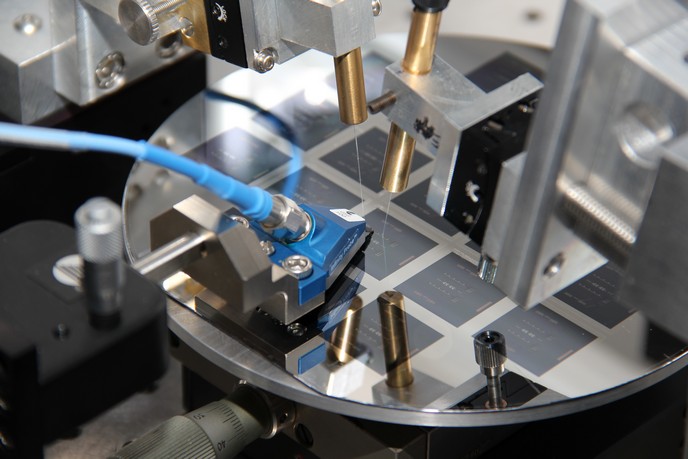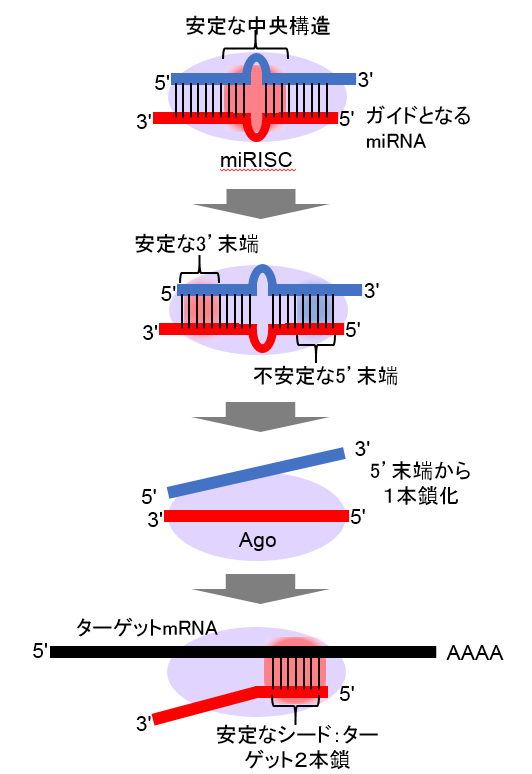(Graphene’s spectacular performance in high-speed optical communications)
2019/1/10 欧州連合(EU) CORDIS

・ 欧州連合(EU) Horizon 2020 のグラフェン・フラッグシップが、シリコンフォトニクスにグラフェンシートを集積し、データ転送速度が最高 50Gb/s のグラフェンベースデータ通信を初めて実証。
・ グラフェン・フラッグシップ・プログラムは、産学による 10 年以内の革新的なグラフェンのアプリケーション開発の促進を目標とする。今回の研究結果は、同フラッグシップのパートナーである、AMO GmbH(ドイツ)、National Inter-University Consortium for Telecommunications(CNIT)(イタリア )、 Ericsson(スウェーデン)、ゲント大学(ベルギー)、Institute of Photonic Sciences(スペイン)、imec(ベルギー)、Nokia(ドイツおよびイタリア)、ウィーン工科大学(オーストリア)、およびケンブリッジ大学(イギリス)によるもの。
・ シリコンはフォトニクスへのモノリシックな集積に適しているが、シリコンフォトニクス技術の主要なコンポーネントの速度向上と電力消費量・サイズの低減が単一チップでは達成できていない。グラフェンの信号送信・変調・検出能力は、単一チップのシリコンフォトニクスを実現する次なる破壊的技術と考える。
・ グラフェンの有する整調可能な光学特性、高い電子移動度やシリコンフォトニクスとの適合性等により、位相変調器、スイッチや光検出器等のモノリシックな集積が可能となる。
・ フラッグシップでは、現在シリコンフォトニクスで利用される高コストな SOI(silicon-on-insulator)ウェハー技術を代替する、2 枚の単層グラフェン(SLG)による、パッシブ導波路に積層した SLG-インシュレータ-SLG のスタックから成るキャパシタの構造を提案。
・ このような構造では、光導波路の材料や、電界吸収・屈折変調メカニズムによらない変調器製造が可能となる。さらに、Ge 光検出器を SLG に置き換えることで、高コストなエピタキシャル成長やそれに伴うドーピング処理が不要となる。
・ グラフェン合成には窒化シリコン(SiN)が最適な基板であり、高い電子移動度や可視光~赤外光の透過性、シリコン・CMOS への適合性を提供する。パッシブ導波路プラットフォームとして、SiN はレーザーの統合や光導波路へのファイバーカップリングを容易にすることで小型のデバイス設計を可能にする。・ グラフェンを集積した同フォトニックコンポーネントでは、グラフェンベース変調器がネットワークの送信側で電子データを光信号にエンコードし、グラフェンベース光検出器が受信側で光変調を電気信号に変換。今回実証した最高50Gb/sのデータ通信は、次世代データ通信におけるグラフェンベースのフォトニックデバイス利用の前途有望な端緒を開くものと考える。
URL: https://cordis.europa.eu/news/rcn/130606/en
関連情報
CORDIS Result Packs Graphene and 2D materials on track to innovative applications URL: https://cordis.europa.eu/article/id/401207-graphene-and-2d-materials-on-track-to-innovat ive-applications/en
関連情報 Graphene Flagship ウェブサイト
URL: https://graphene-flagship.eu/
<NEDO海外技術情報より>
Graphene’s spectacular performance in high-speed optical communications
Integrating graphene sheets into silicon photonics could form the basis for next-generation data communications. Researchers from the Graphene Flagship initiative have pushed the technology closer to application by demonstrating the world’s first high-speed graphene-based data communication at a data rate of 50 Gb/s.
The Graphene Flagship programme aims to act as a catalyst for the development of groundbreaking applications by bringing together academia and industry to take this versatile material into society within 10 years. The importance of integrating graphene in silicon photonics was evident in the joint results produced by the collaboration between Flagship partners AMO GmbH (Germany), the National Inter-University Consortium for Telecommunications (CNIT) (Italy), Ericsson (Sweden), Ghent University (Belgium), the Institute of Photonic Sciences (ICFO) (Spain), imec (Belgium), Nokia (Germany and Italy), the Vienna University of Technology (TU Wien) (Austria) and the University of Cambridge (UK).
One-chip wonder
Silicon has been widely hailed as suitable for monolithic integration for photonics. However, increasing the speed and reducing the power and footprint of key components of silicon photonics technology has not been achieved in a single chip, to date. But graphene — with its capacity for signal emission, modulation and detection — can be the next disruptive technology to achieve this.
“Graphene offers an all-in-one solution for optoelectronic technologies,” notes Daniel Neumaier from AMO GmbH, Leader of the Graphene Flagships Division on Electronics and Photonics Integration. Its tuneable optical properties, high electrical mobility, spectrally broadband operation and compatibility with silicon photonics allow monolithic integration of phase and absorption modulators, switches and photodetectors. Integration on a single chip can increase device performance and substantially reduce its footprint and fabrication cost.
Not entirely stuck on silicon
Light modulation and detection are key operations in photonic integrated circuits. Lacking a bandgap, graphene makes broadband light detection with a single material possible as it absorbs uniformly across a broad range in the visible and infrared spectrum. The 2D material also displays electro-absorption and electro-refraction effects that can be used for ultrafast modulation.
Instead of relying on the expensive silicon-on-insulator wafer technology widely used in silicon photonics, Graphene Flagship researchers proposed a more convenient configuration. This consisted of a pair of single-layer graphene (SLG) layers, a capacitor consisting of an SLG-insulator-SLG stack on top of a passive waveguide. “Such an arrangement boasts several advantages compared to silicon photonic modulators,” explains Neumaier. As he further outlines, modulator fabrication does not rely on the waveguide material or the electro-absorption and electro-refraction modulation mechanisms. In addition, replacing germanium photodetectors with SLG removes the need for the fairly costly modules of germanium epitaxy and the accompanying specialised doping processes.
Silicon nitride (SiN) provided a good substrate for synthesising graphene, enabling high carrier mobility, transparency over the visible and infrared regions and perfect compatibility with silicon and complementary metal-oxide semiconductor (CMOS) technologies. As a passive waveguide platform, SiN facilitates laser integration and fibre coupling to the waveguide, thereby enabling the design of miniaturised devices.
A bright future for graphene-based photoelectronics
Tapping into the potential of graphene, researchers successfully demonstrated data communication with graphene photonic components up to a data rate of 50 Gb/s. A graphene-based modulator processed the data on the transmitter side of the network, encoding an electronic data stream to an optical signal. On the receiver side, a graphene-based photodetector converted the optical modulation into an electronic signal. “These results are a promising start for using graphene-based photonic devices in next-generation data communications,” Neumaier concludes.



